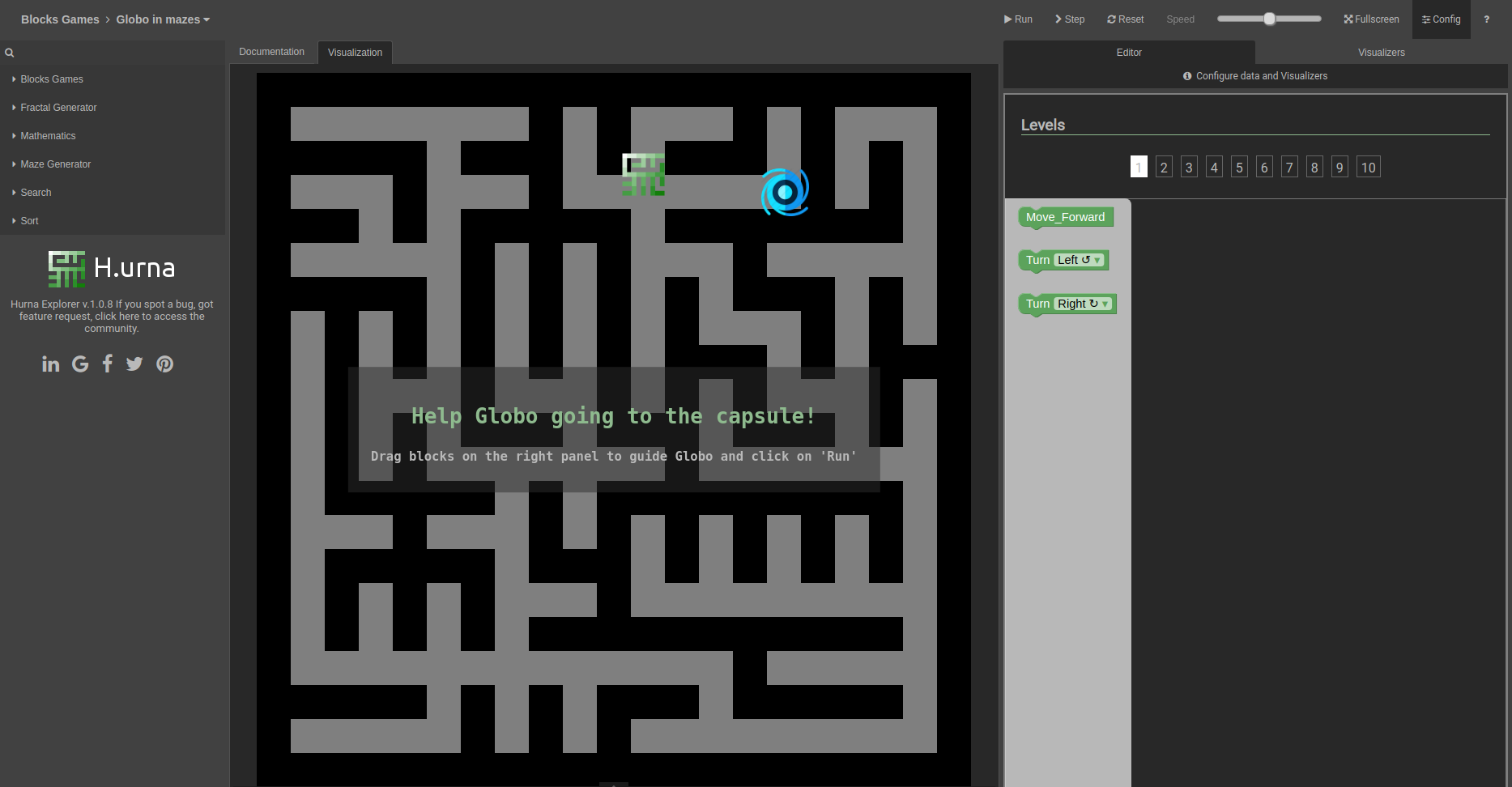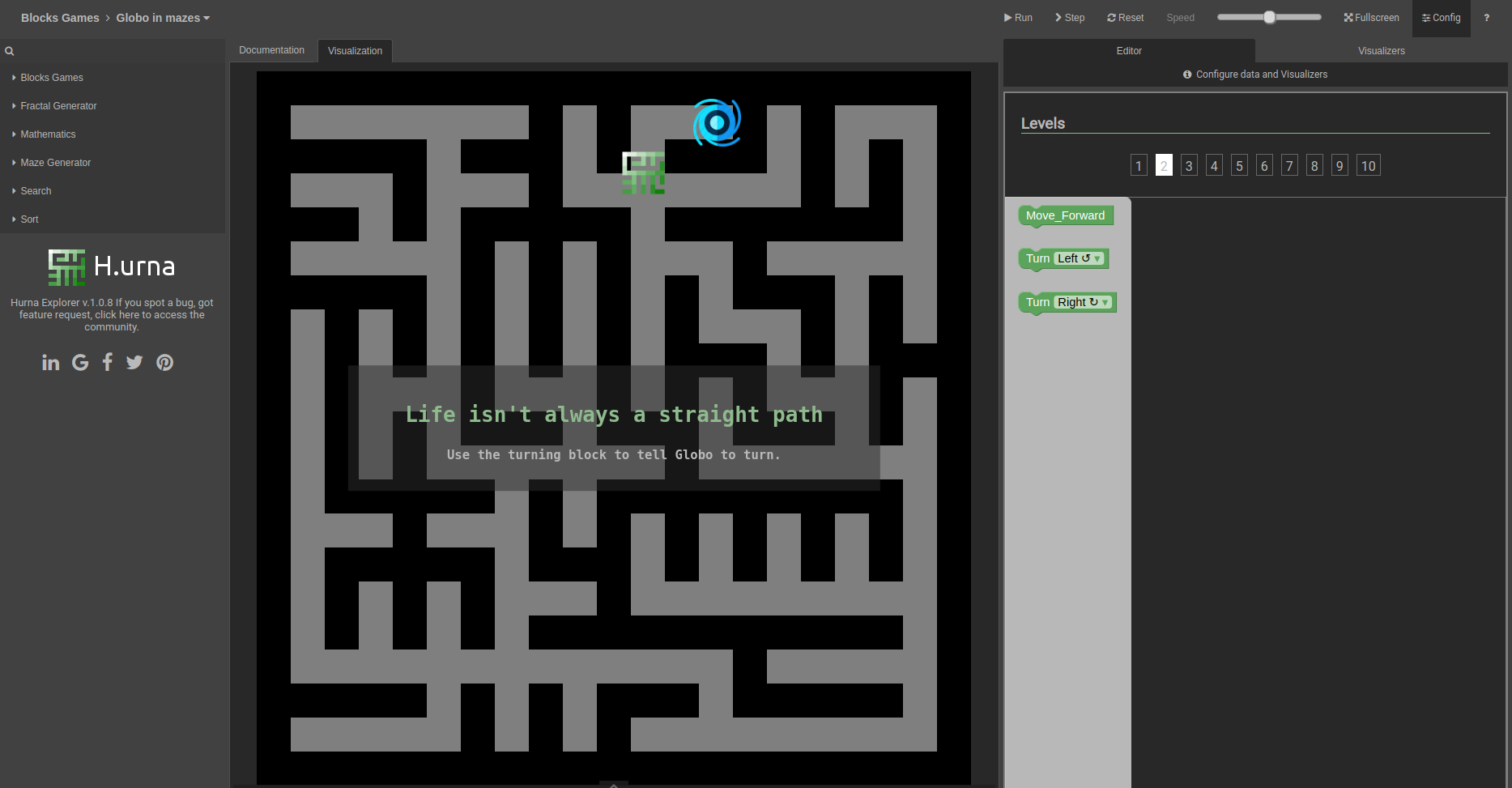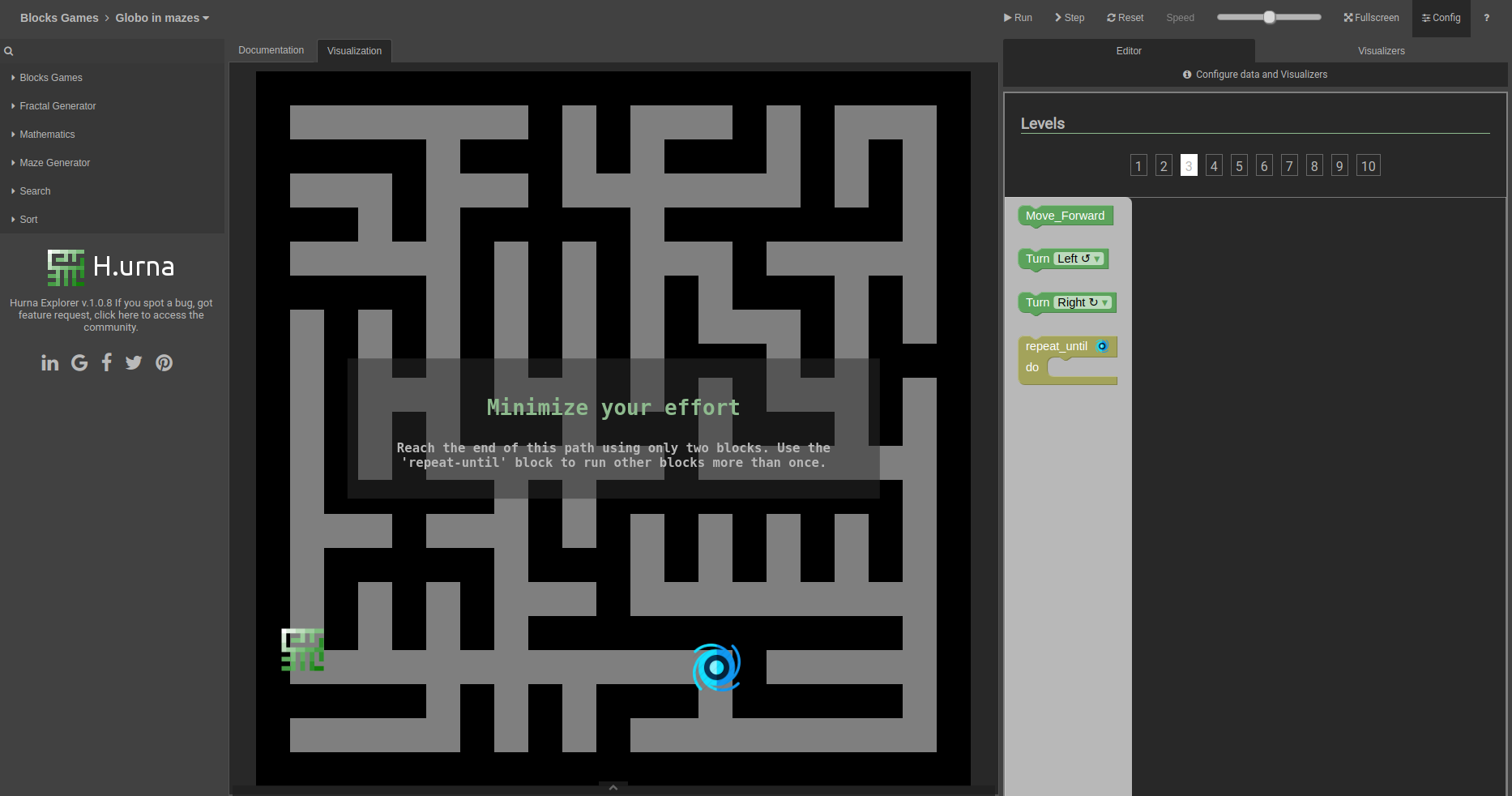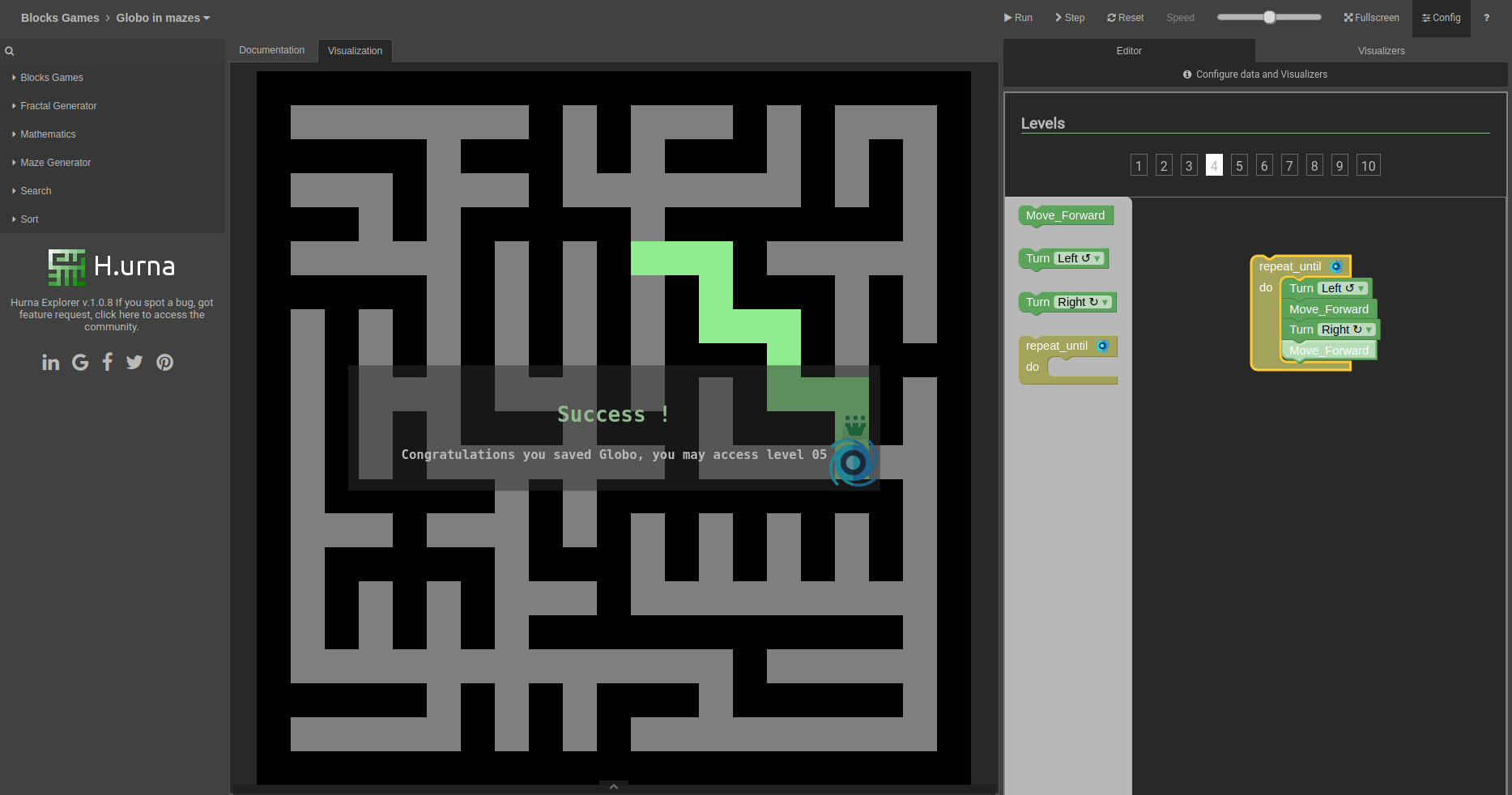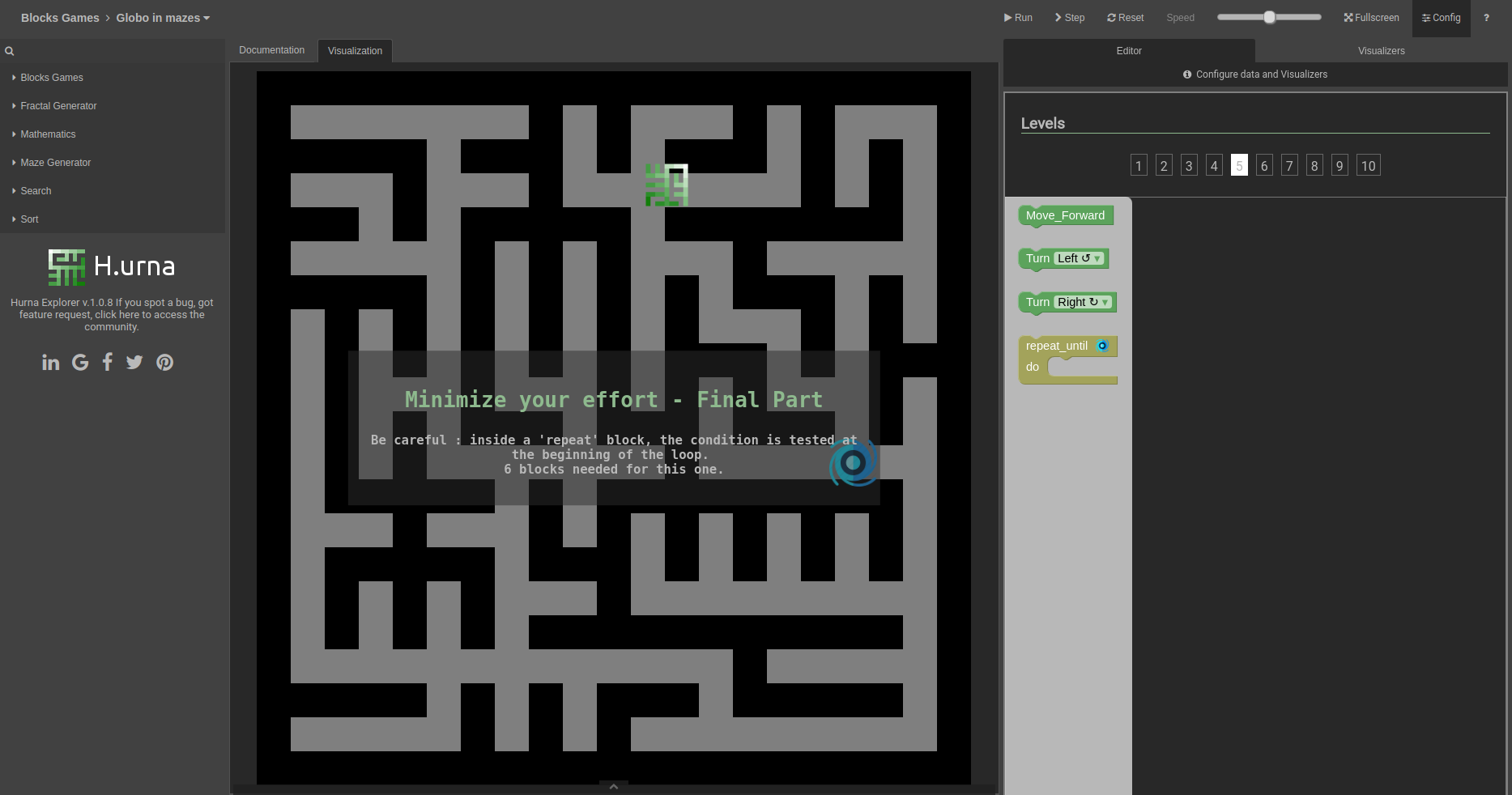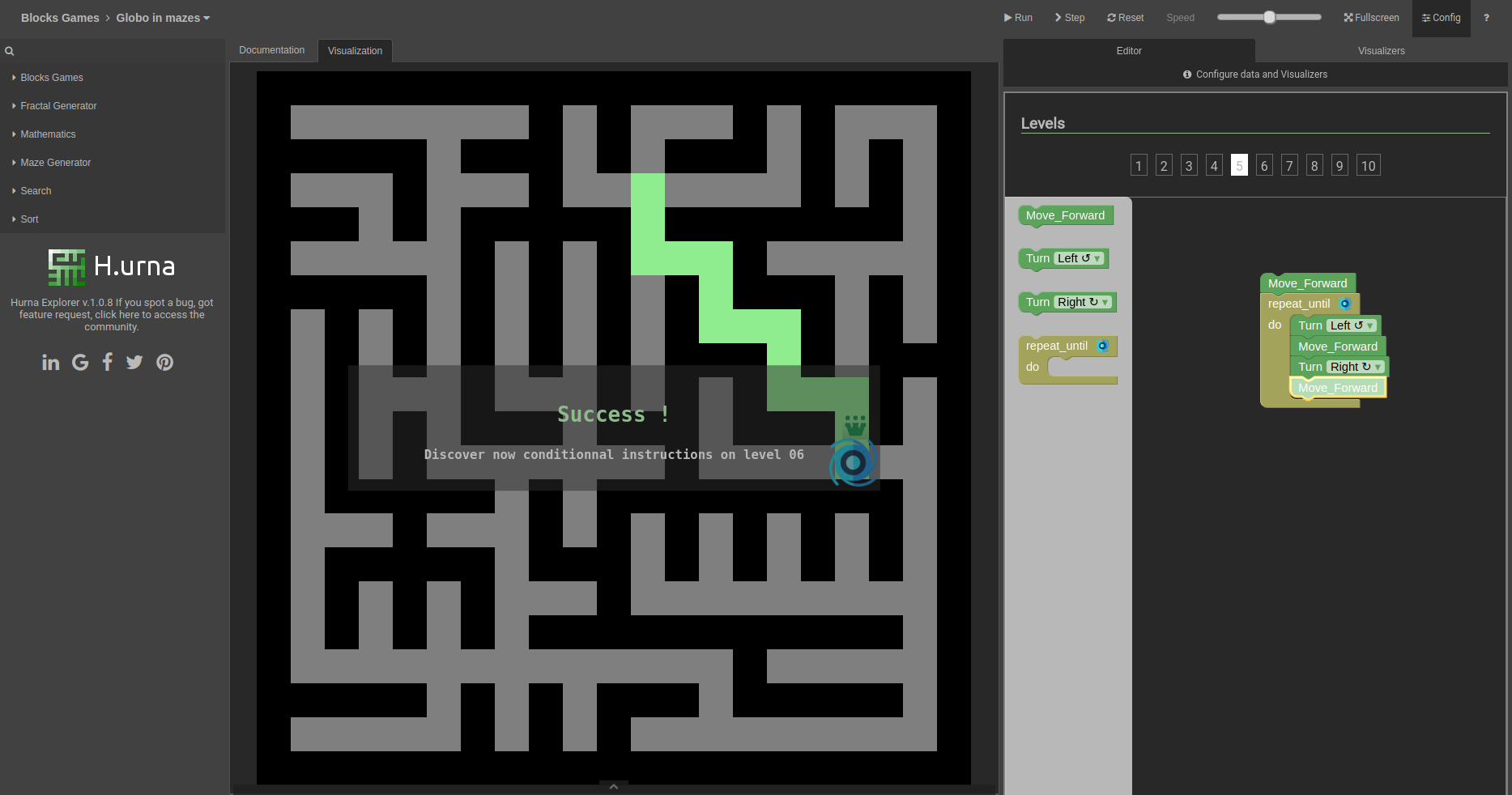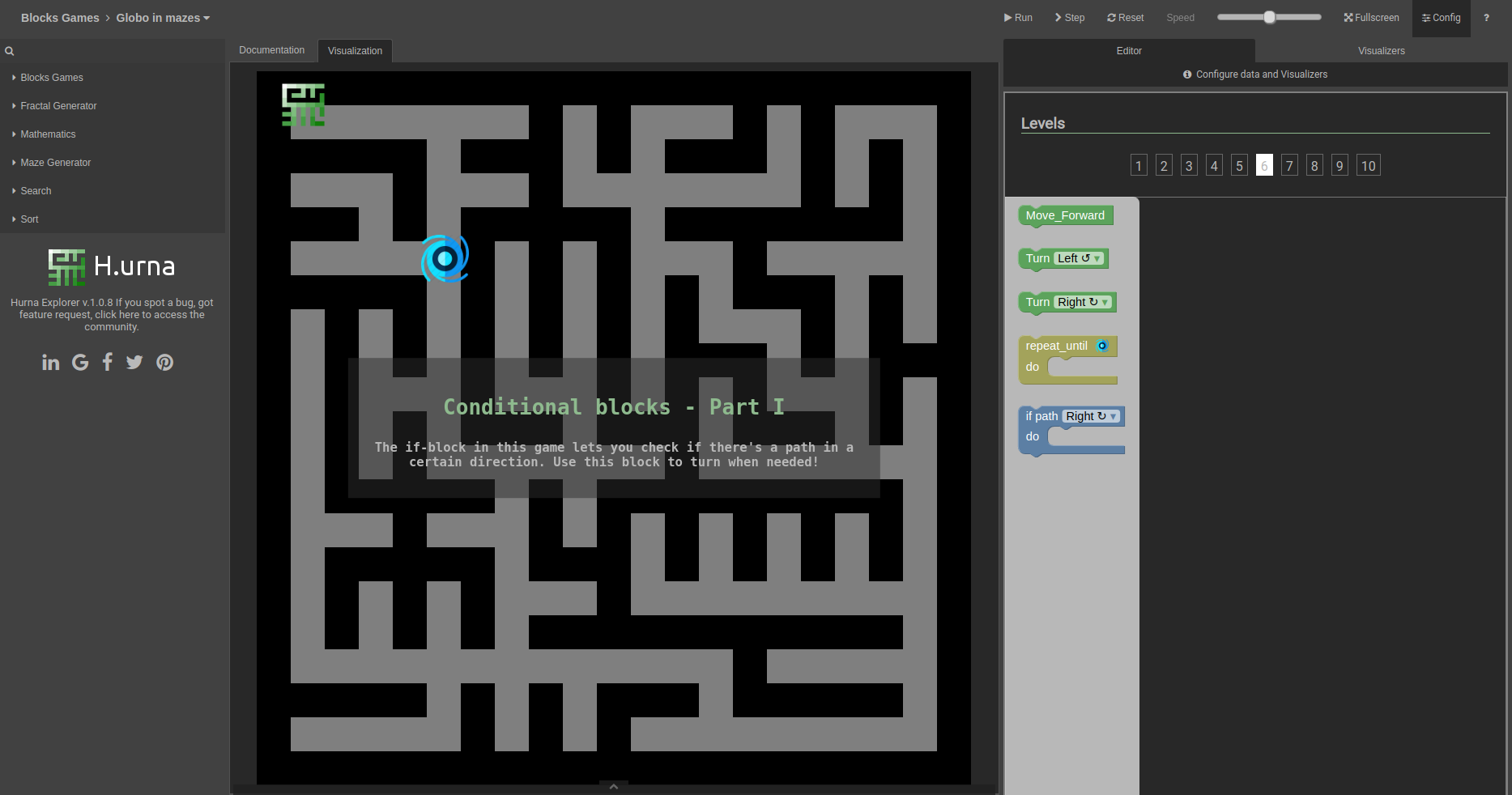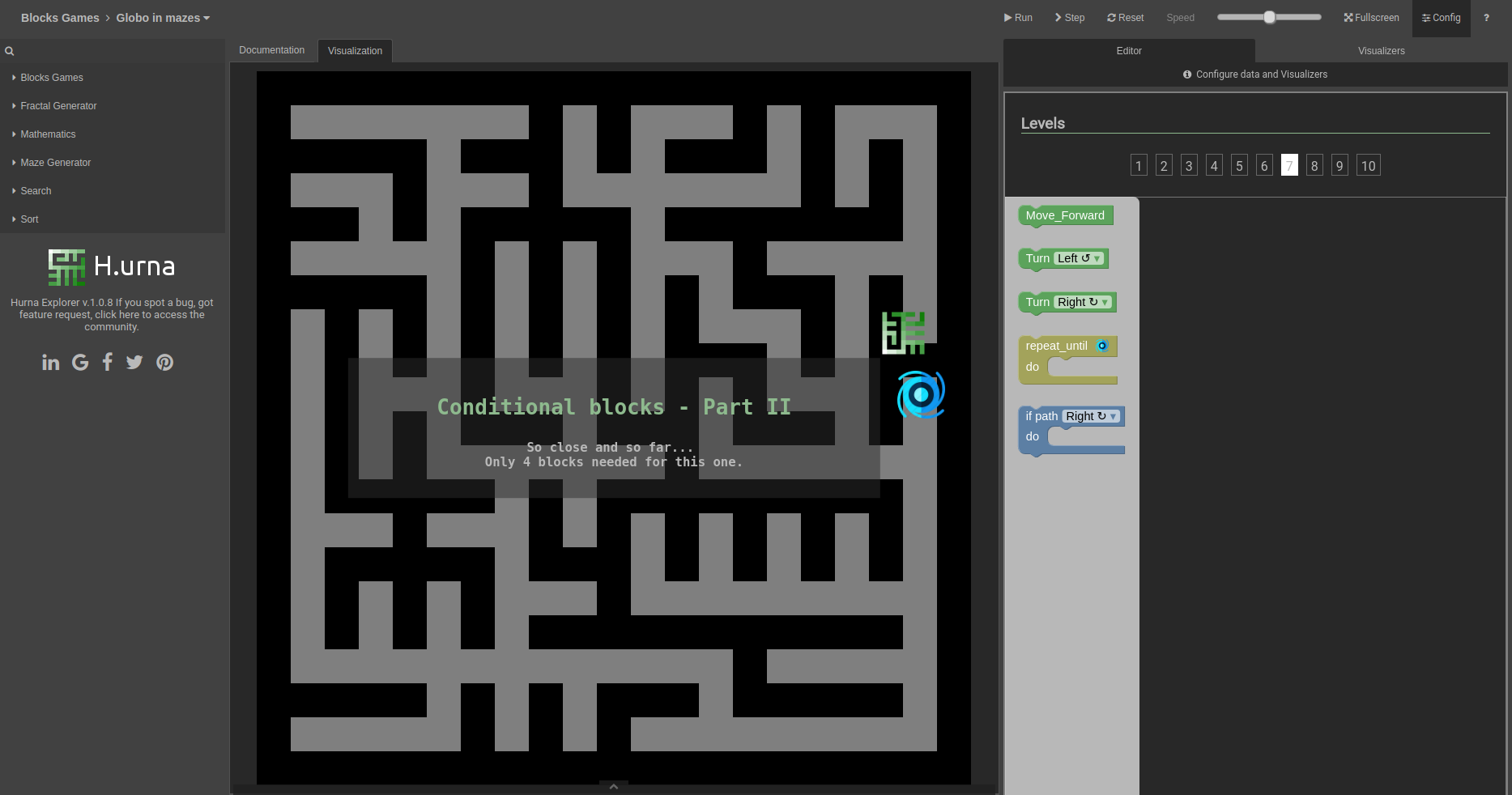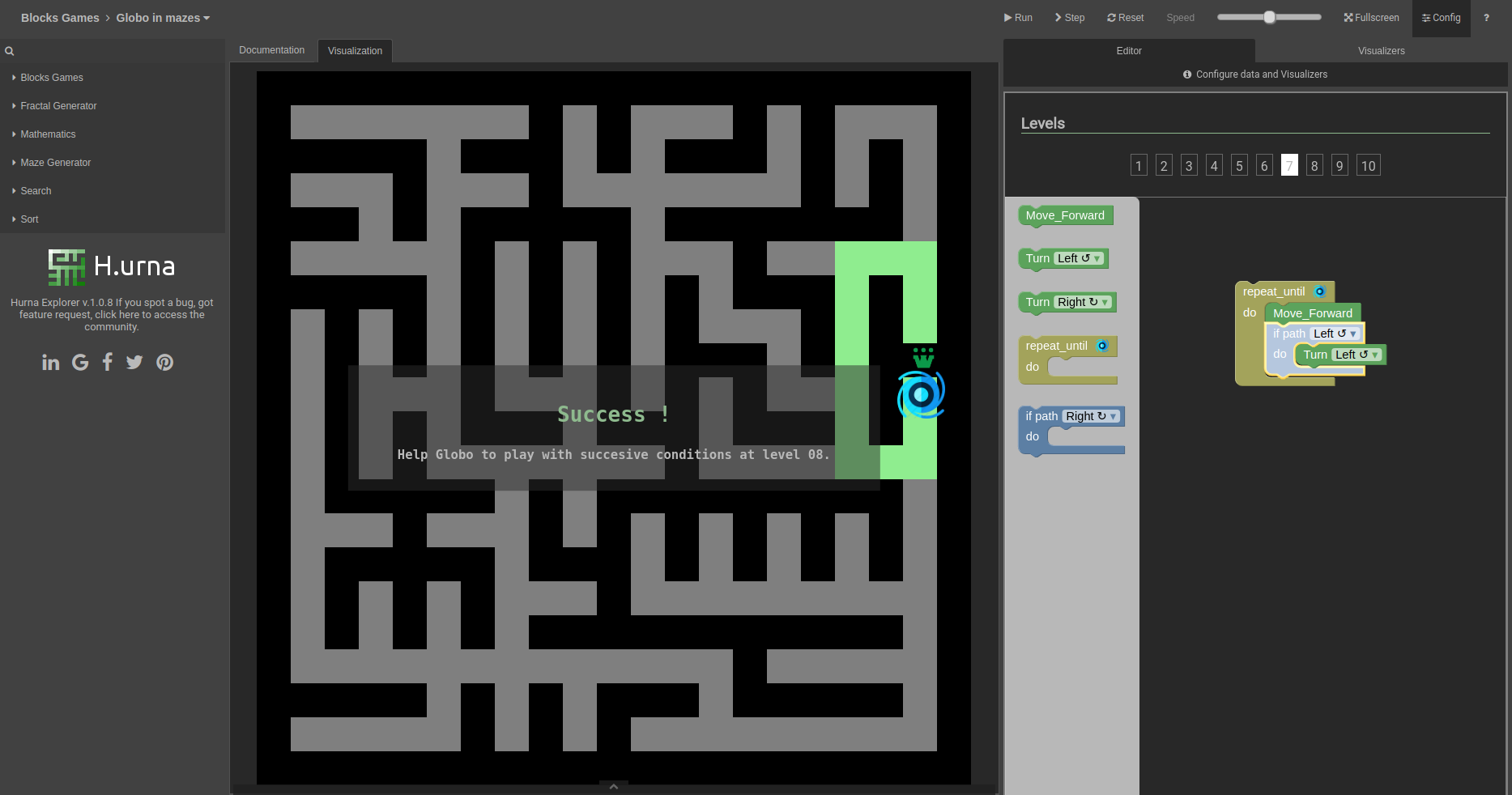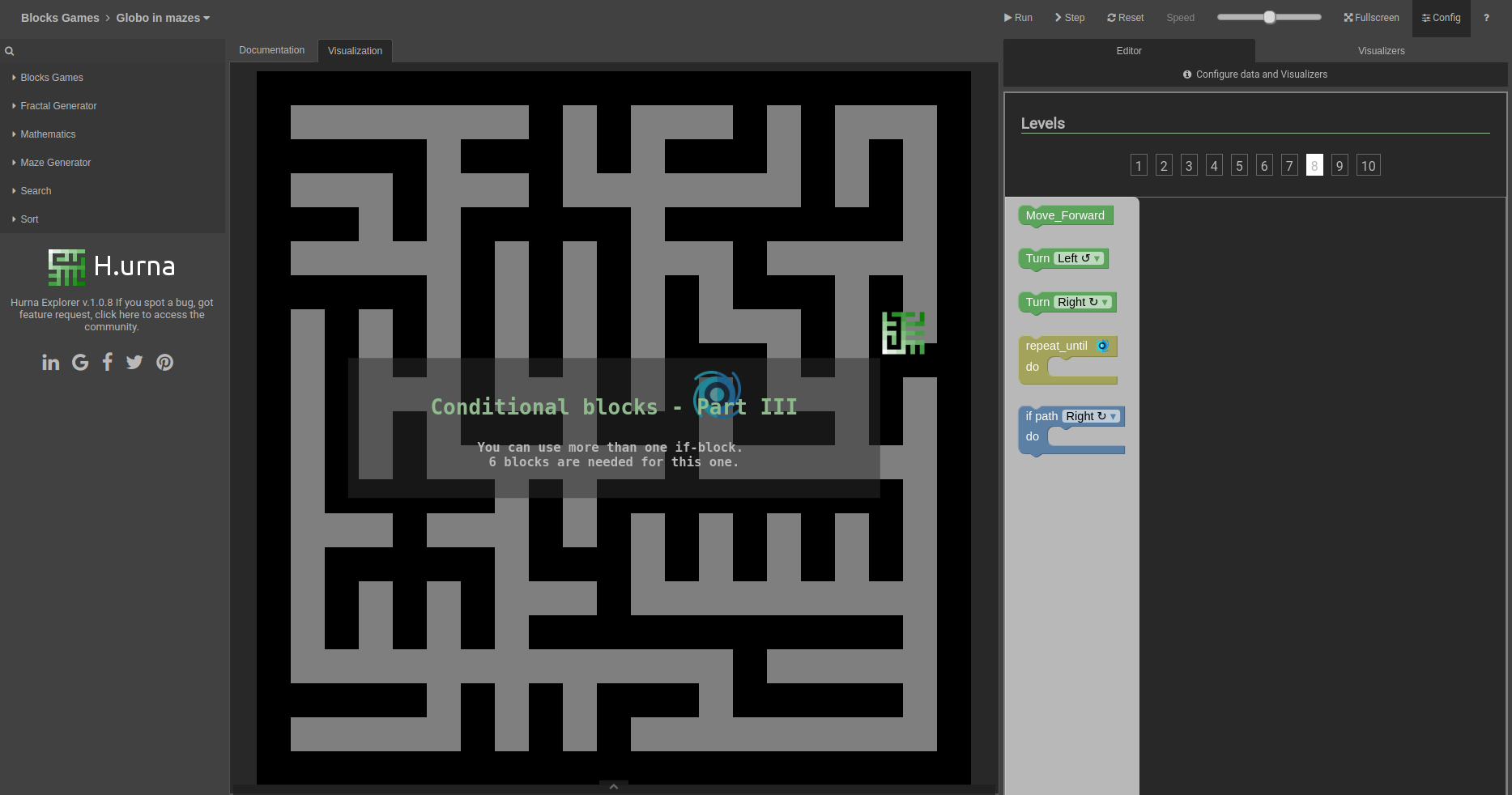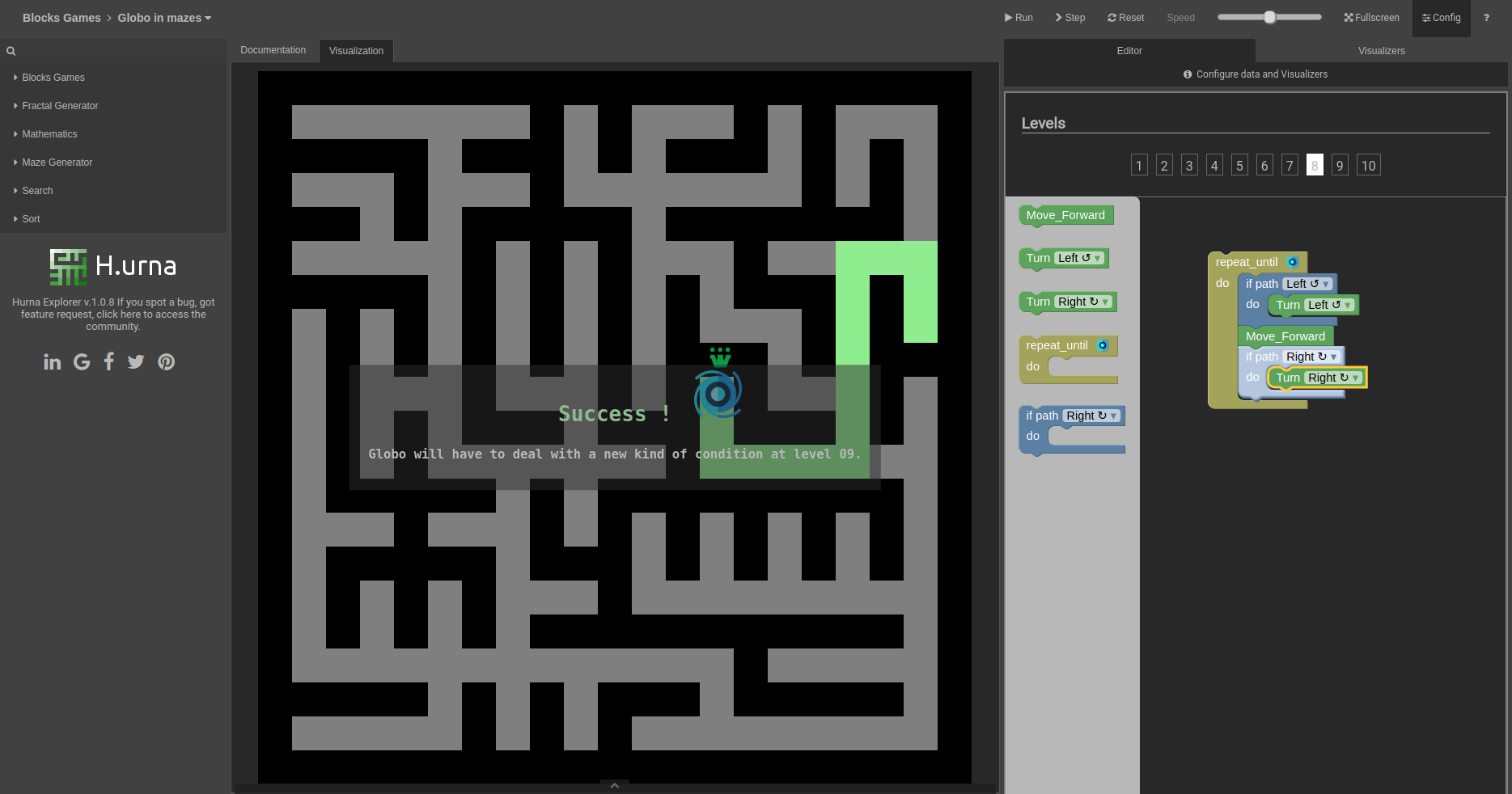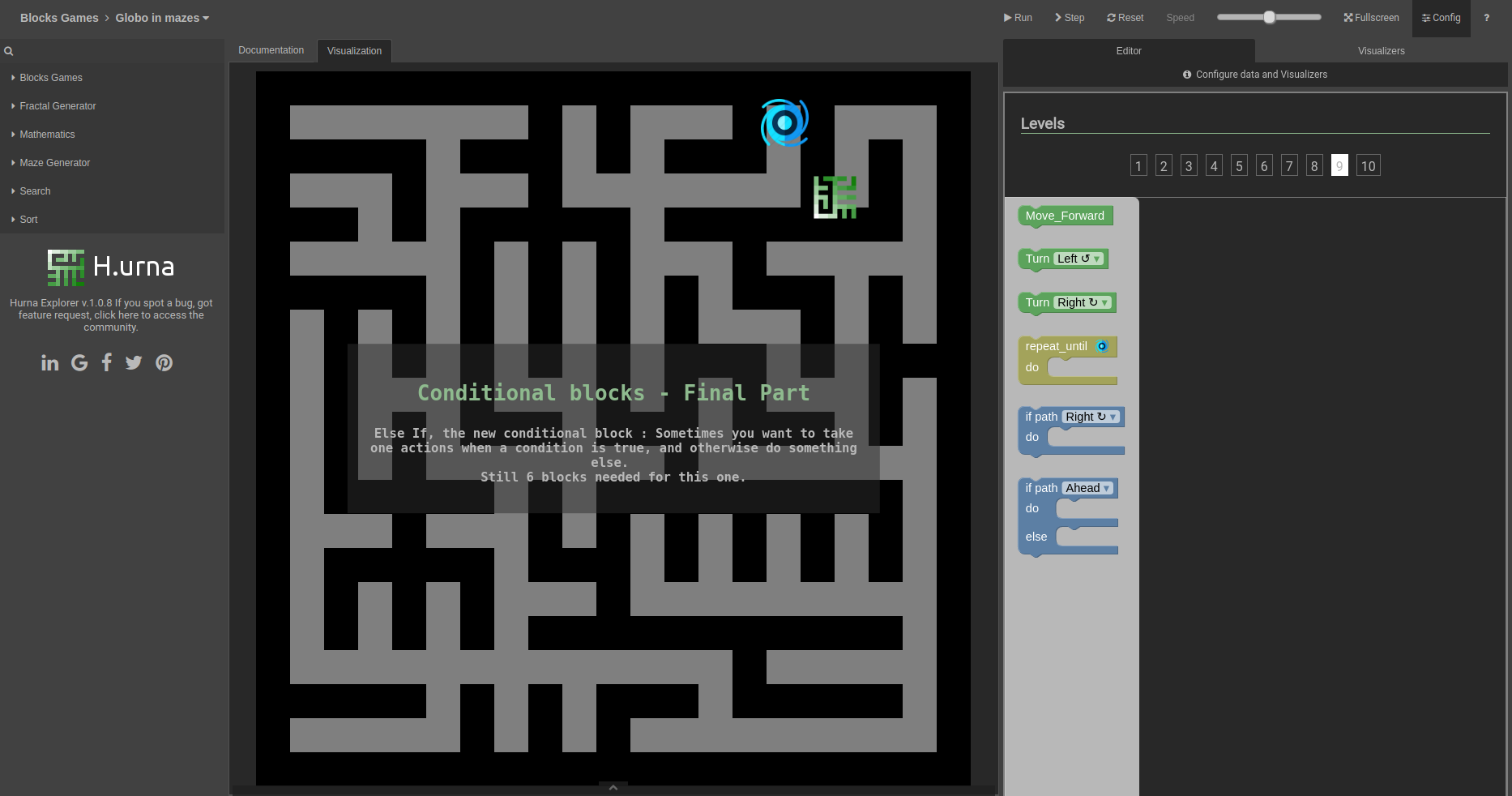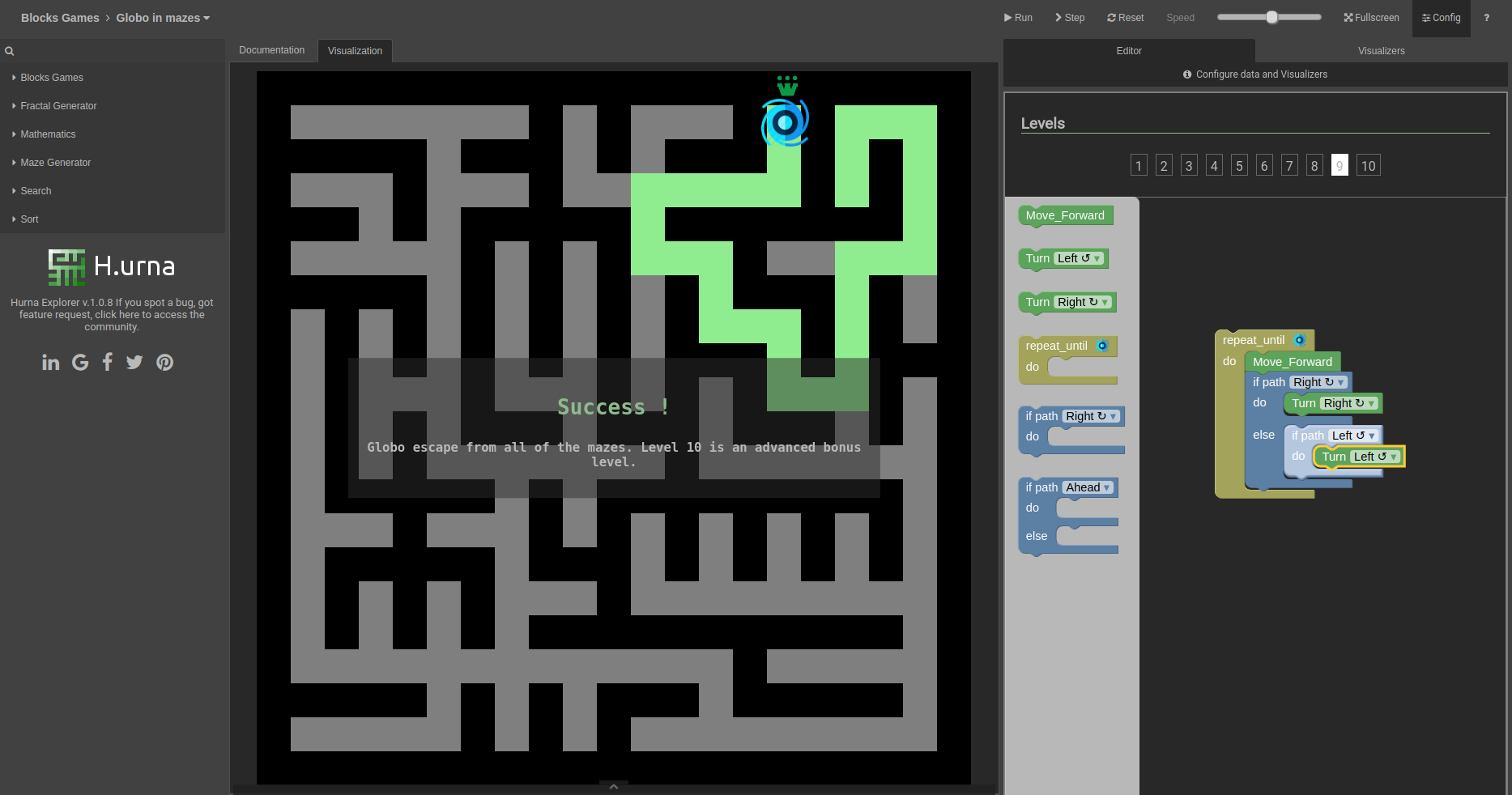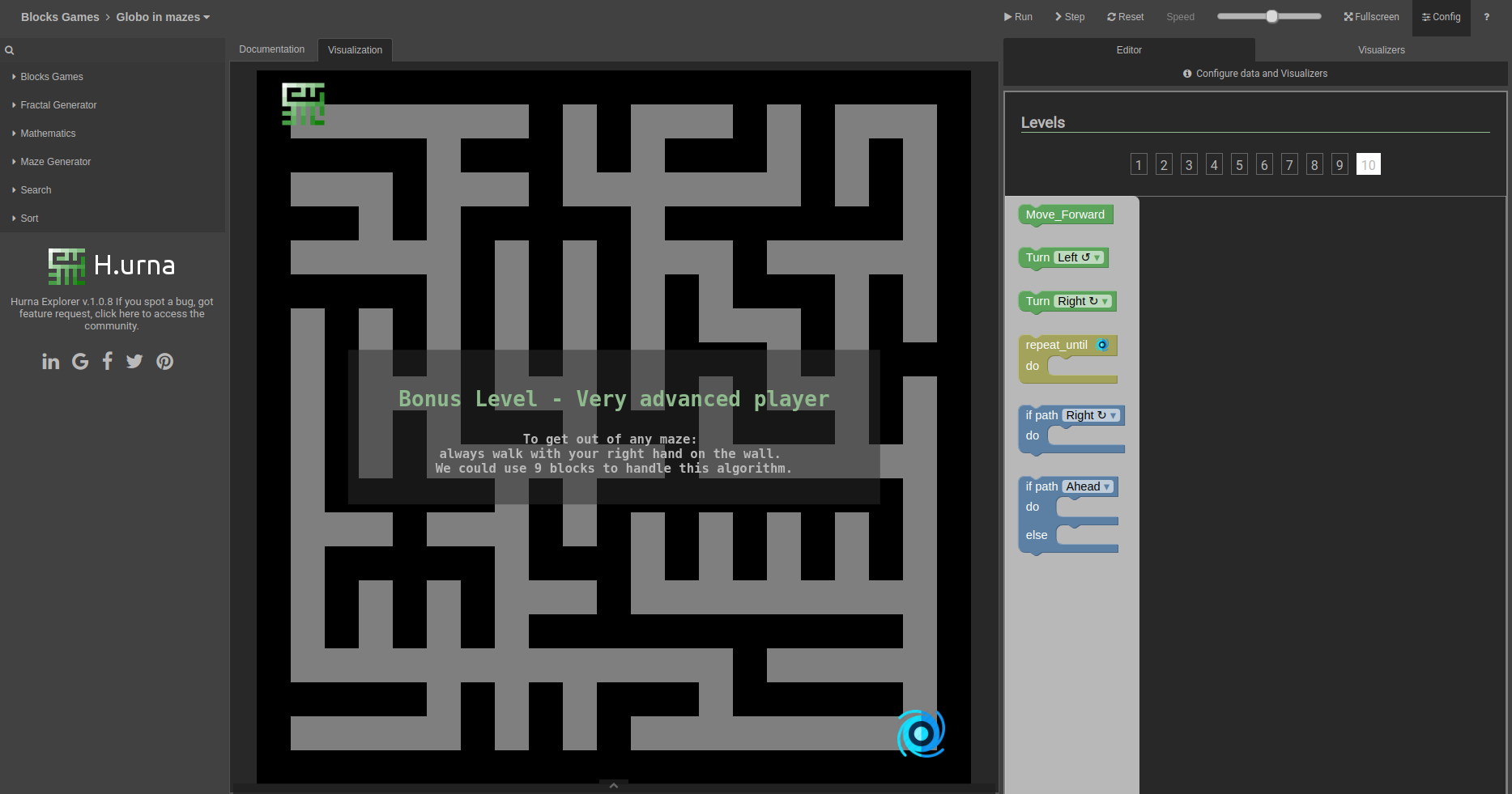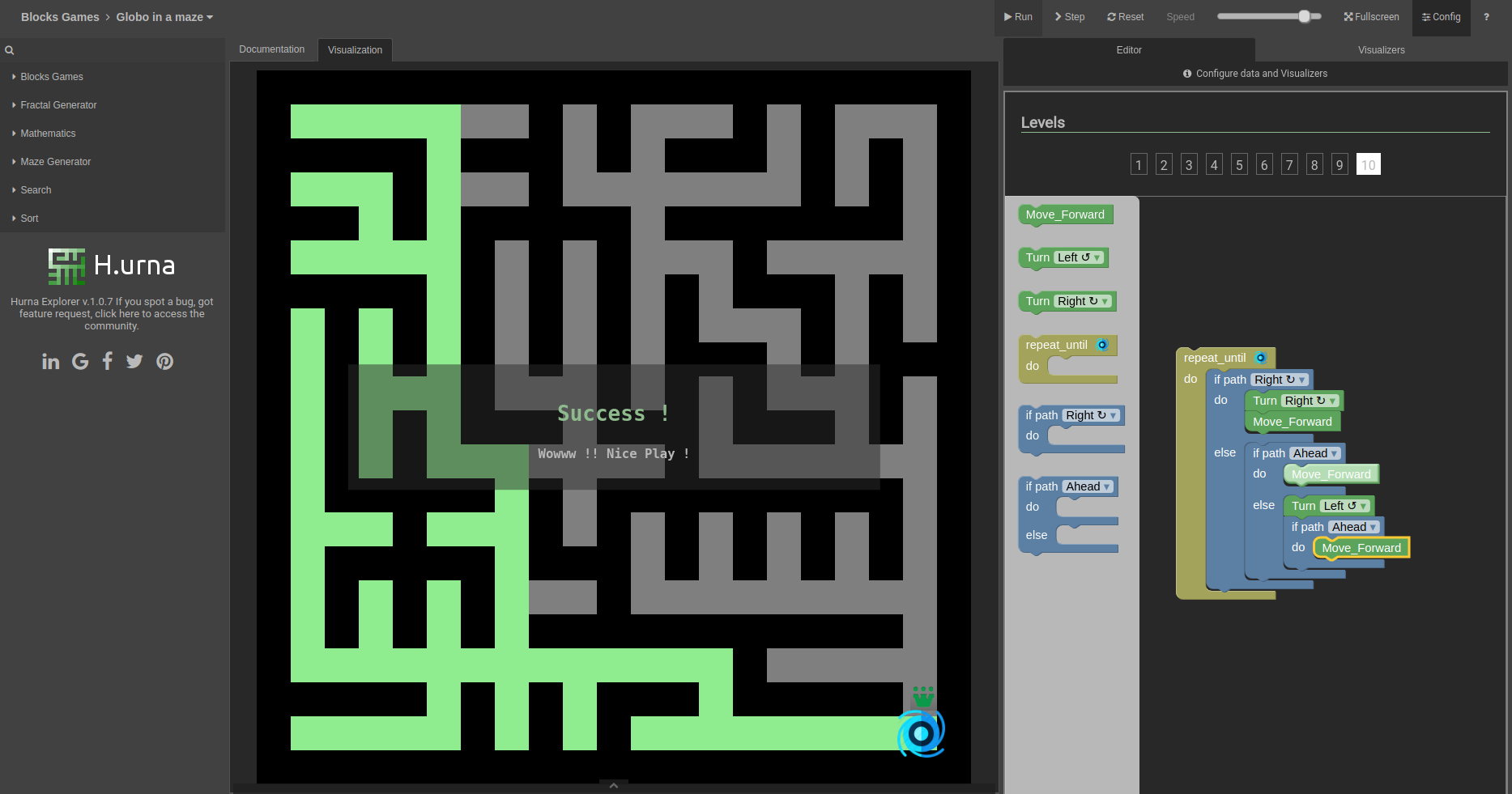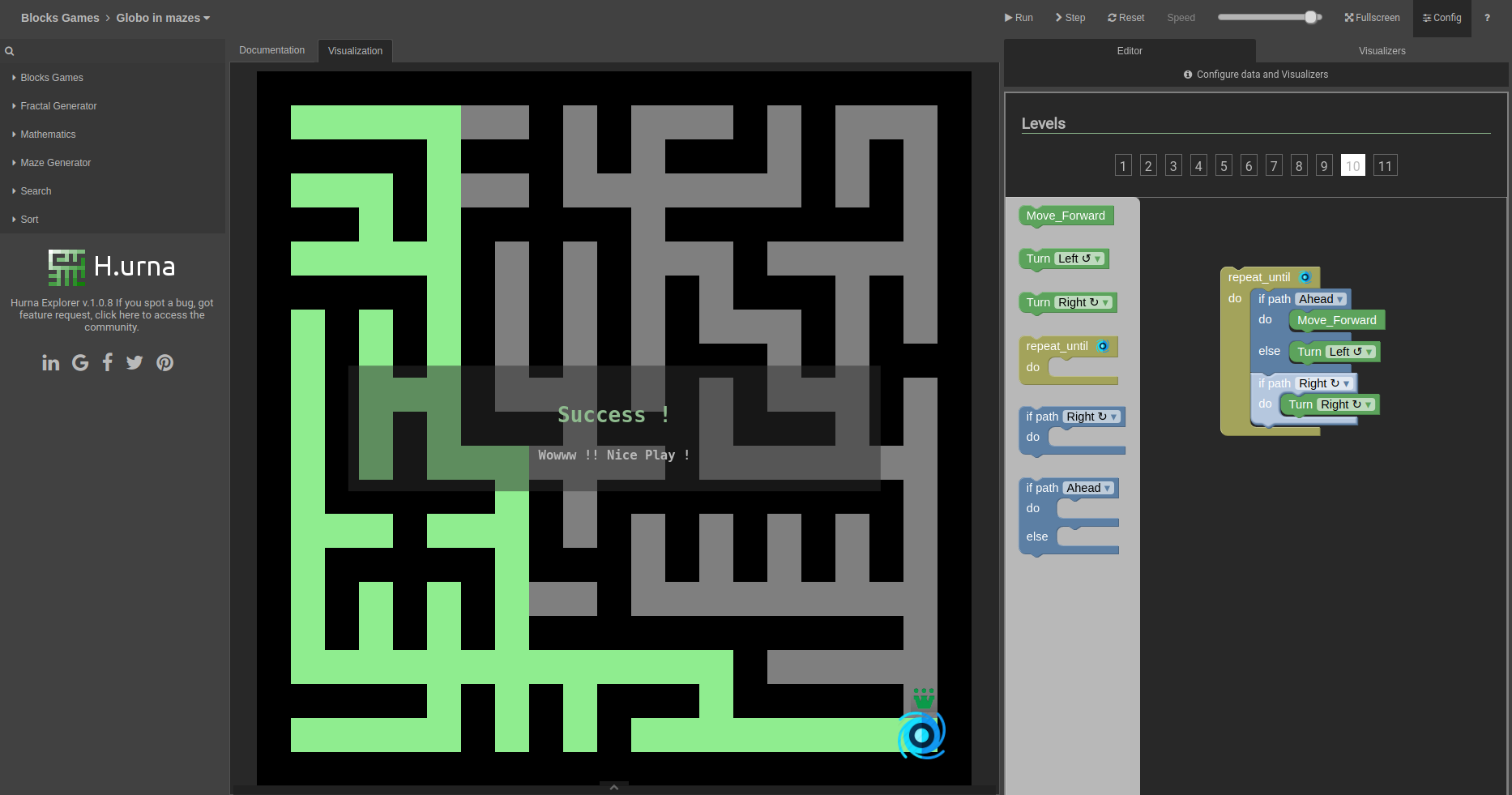
Quick Access
Introduce programming using blocks : help Globo getting out of the mazes !
Mainly destined for kids and youths, this module is the first of H.urna games dedicated to learning programming without having to write any line of code. Players will instead drag blocks to tell our mascotte Globo how to escape the mazes.
While professional programmers create software by writing lines of code for a computer to interpret, you get started here with a visual programming tool you can freely play with. Moreover, do not worry, this game is progressive so you can learn programming concepts step-by-step.

Still : the difficulty may be unusual even for those who usually do programming ; )
The Game
Oh, my Glob! Globo was traveling across some dimensions when he got stuck within its inner mazes!! We told him to avoid the loop, but it could not help. Now… We have to connect and guide him back to its capsule.
Drag block instruction on the right panel to tell Globo what to do to join its blue capsule without hitting a wall. Remember : a program is just a series of instructions that tells a computer what to do.
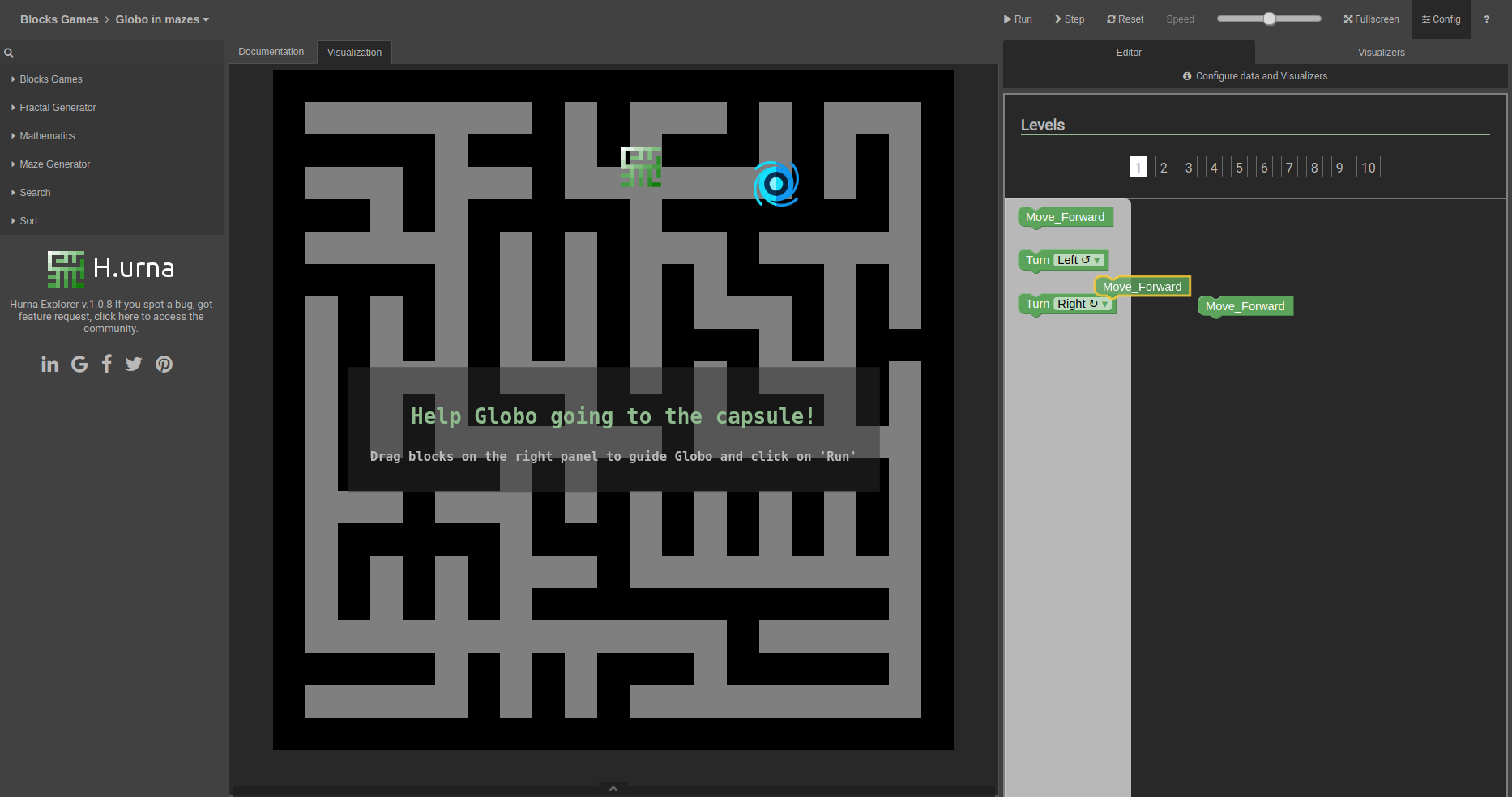
There are three possible outcomes Globo may encounter with your instructions: - Globo gets to the capsule. - Globo did not reach the goal. - Globo hit a wall. For the two last cases: retry by changing your blocks and click on play.
You are now ready to tackle the challenges and save Globo.
Below are the descriptions and programming concepts covered by each level. You will also find a solution for each of them.
Levels 1 - 2 : Simple instructions
Those are the warming up levels; here you can discover and play with the blocks interface. Still, the second level starts to require some spatial representation and the relativity of an instruction (e.g. turning left depends on the current direction of Globo).
Level 1 - Help Globo going to the capsule!
Use only two blocks to instruct Globo to go straight to the goal.
Level 2 - Life is not always a straight path
Use the turning block to tell Globo to turn left or right.
Levels 3 - 5: Loop
Those levels introduce the concept of 'Loop': what makes programming so convenient when we want to repeat the same operation any number of times. Use here the "repeat-until" block to create a loop. Put instruction blocks inside the loop; they will be executed on each run (or iteration) through the loop. The loop condition is here set to stop only once the goal is reached.
Level 3 - Minimize your effort
Reach the end of this path using only two blocks. Use the 'repeat-until' block to run other blocks more than once.
Level 4 - Minimize your effort - Part II
You can fit more than one block inside a 'repeat' block. Five blocks are needed to solve this level.
Level 5 - Minimize your effort - Final Part
Be careful : inside a 'repeat-until' block, the condition is tested only at the beginning of each iteration (of the loop). You do not need to put all your code in the loop. Six blocks needed for this one.
Levels 6 - 9 : Conditions
Until now you haveve programmed a series of instructions that get executed no matter what. However, sometimes, you only want to do something only when a specific condition is true. For instance, you arrive at your house, if your door is closed, you will have to open it to enter your house.
This is the same with programming; you have to tell the computer what to do depending on the conditions (variables). You will guide Globo using if blocks to tell him to check some condition before taking action.
Level 6 - Conditional blocks - Part I
The if-block in this game lets you check if there is a path in a specific direction. Use this block to turn when needed!
Level 7 - Conditional blocks - Part II
So close and so far... Sometimes the maze seems more complicated while the logic behind a solution stays the same.
Level 8 - Conditional blocks - Part III
Can you solve this challenge with six blocks to spare? You can use more than one if-block within the loop; then be careful with the order of your instructions : it has its importance.
Level 9 - Conditional blocks - Final Part (Advanced Player)
If-Else, a new conditional block : Sometimes you want to take one action when a condition is true, and otherwise do something else. For instance, this time you are in the front of your house which is locked. If you got the keys, you might unlock it to enter, but otherwise (else) you could ring the bell hoping someone could unlock it for you.
Note: It is essential to set the condition order carefully since the program always checks the "if" condition first. If it is true, it will always skip the else statement.
Even if it looks much more complicated, there are still six blocks needed for this one.
Level 10 - Bonus level (Advanced Player)
The bonus level is for the advanced user, but it is very funny and not that difficult in the end. Do not hesitate to change the animation speed to make it quicker ;)
Since childhood, I have always heard that to get out of any maze I should always walk with my right hand on the wall. This level is the perfect one to test this assumption, and trust me; it is enjoyable to visualize. This strategy is best-known as 'the wall follower', 'left-hand rule' or 'the right-hand rule'.
Caution: This strategy only works for simply connected mazes : when all its walls are connected. You can easily represent the possible failure on more complex mazes.
You are now on a labyrinth where a wall is alone in the middle (not connected to any other) and you start with your hand on it. What will this strategy result in? You infinitely turn around this unique wall and get lost forever...
Jump in Hurna Explorer to play and solve yourself the ten mazes Globo is stuck in.

 Play online
Play online
